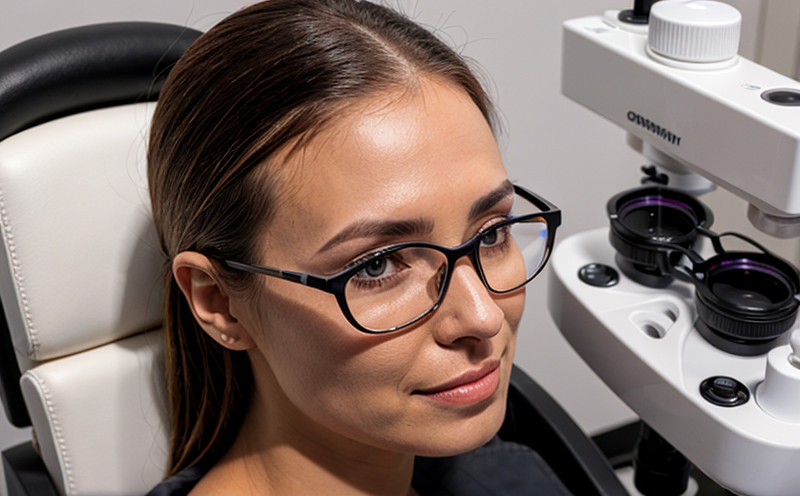USP Uniformity of Dosage Units Testing for Multi Dose
The USP (United States Pharmacopeia) Uniformity of Dosage Units Test (USP 71) is a critical quality assurance procedure designed to ensure that multi-unit dosage forms are consistent in their active ingredient content. This test is especially important for products like ophthalmic solutions, where even minor variations can lead to inconsistent efficacy and patient outcomes.
During the USP 71 test, individual units of a multi-dose pharmaceutical product (such as vials or bottles) are extracted under controlled conditions. The active ingredient content in each unit is then measured using validated analytical methods such as High Performance Liquid Chromatography (HPLC), Ultraviolet-Visible Spectrophotometry (UV-VIS), or Infrared Spectroscopy.
The acceptance criteria for this test are based on the variability of the active ingredient content. Typically, the percentage variation between individual units should not exceed 15% when compared to the average content determined from a specified number of samples (usually at least six). This ensures that each unit in a multi-dose container provides consistent therapeutic benefit.
Industry Context: The pharmaceutical industry relies heavily on such tests to meet regulatory requirements and ensure product quality. In ophthalmic products, this is particularly important because even small variations can impact the treatment outcomes for patients with sensitive eyes.
The USP 71 test is not just about compliance; it also helps in optimizing production processes by identifying potential issues early on. For instance, if a batch consistently fails to meet the acceptance criteria, further investigation into formulation or manufacturing variables may be warranted.
Test Parameters: The testing process involves several key steps:
- Sampling: A representative number of units are withdrawn from the container.
- Preparation: Each unit is prepared for analysis by appropriate means, which might include dilution or concentration.
- Analysis: Analytical methods are used to measure the active ingredient content in each sample.
- Evaluation: Data from all samples are compared against established acceptance criteria.
Instrumentation: The choice of analytical instrumentation is critical for accurate results. Commonly used instruments include HPLC, UV-VIS spectrophotometers, and infrared spectroscopy systems. Each method has its strengths depending on the nature of the active ingredient.
The acceptance criteria are based on statistical analysis of the data obtained from multiple samples. This ensures that the variability observed is within acceptable limits for therapeutic efficacy and patient safety.
Real-world Usage: In ophthalmic product manufacturing, ensuring uniformity in dosage units is paramount due to the sensitive nature of ocular tissues. Failure to meet these standards can lead to ineffective treatment or even adverse reactions, which could harm patients and damage a company's reputation.
Scope and Methodology
The scope of the USP 71 test covers all multi-dose containers where uniformity in dosage units is critical for therapeutic efficacy. This includes but is not limited to ophthalmic solutions, eye drops, and other ocular products.
The methodology involves several key steps:
- Sampling: A representative number of units are withdrawn from the container.
- Preparation: Each unit is prepared for analysis by appropriate means, which might include dilution or concentration.
- Analysis: Analytical methods such as HPLC, UV-VIS spectrophotometry, or infrared spectroscopy are used to measure the active ingredient content in each sample.
- Evaluation: Data from all samples are compared against established acceptance criteria. Typically, the percentage variation between individual units should not exceed 15% when compared to the average content determined from a specified number of samples (usually at least six).
The acceptance criteria for this test ensure that each unit in a multi-dose container provides consistent therapeutic benefit. This is crucial, especially in sensitive areas such as ophthalmology.
Industry Applications
- Ophthalmic Solutions: Ensuring uniformity in dosage units for ophthalmic solutions helps maintain consistent therapeutic efficacy and patient safety.
- Eye Drops: Consistent dosing is essential to prevent variability in treatment outcomes, which could affect both effectiveness and patient comfort.
- Eyewashes: Uniformity ensures that the product provides the intended level of hygiene and protection against ocular irritants.
The importance of this test extends beyond just quality assurance; it also plays a role in process optimization. Identifying batches or production runs that fail to meet acceptance criteria can help pinpoint issues related to formulation, manufacturing processes, or packaging.
Eurolab Advantages
Expertise and Experience: Eurolab brings extensive experience in pharmaceutical testing, particularly in the area of USP 71 testing for multi-dose products. Our team of experts has conducted numerous such tests across various product types.
State-of-the-Art Facilities: We are equipped with advanced analytical instrumentation that ensures precise and accurate results. This is crucial for meeting stringent regulatory standards and ensuring product quality.
Comprehensive Reporting: Our reports provide detailed analysis of each test, including raw data, statistical evaluations, and conclusions. This helps clients make informed decisions about their production processes and product quality.
Regulatory Compliance: Eurolab adheres to international standards such as USP 71, ensuring that all our tests meet the highest regulatory requirements. This is critical for maintaining compliance with global pharmaceutical regulations.





